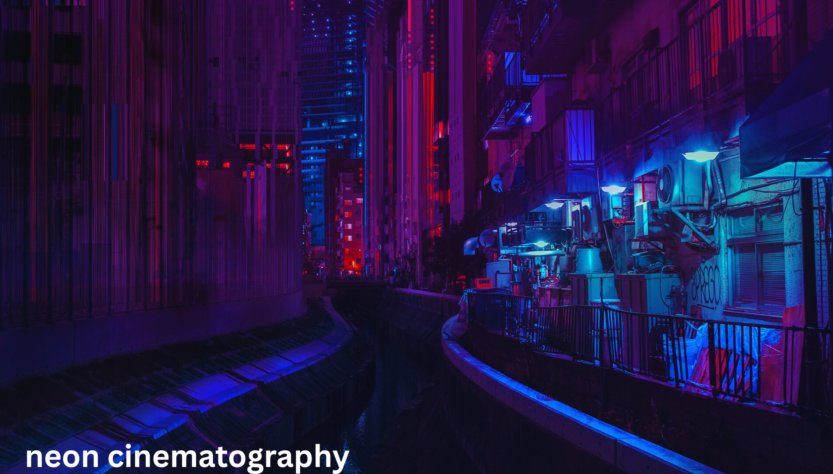Neon cinematography is a captivating visual style that has gained prominence in modern filmmaking. Characterized by its bold use of bright colors, especially neon hues, this technique creates an immersive and electrifying atmosphere. In this article, we will delve into the essence of neon cinematography, its historical context, its impact on storytelling, and notable films that have effectively employed this striking aesthetic.
Understanding Neon Cinematography
What is Neon Cinematography?
Neon cinematography refers to the use of vibrant neon colors, often achieved through artificial lighting, to create visually stunning scenes in film and television. This technique not only enhances the visual appeal but also contributes to the emotional tone and thematic depth of a story. Neon lighting can evoke feelings of nostalgia, excitement, or even tension, depending on its application.
The Role of Color in Film
Color plays a crucial role in filmmaking, influencing viewers’ emotions and perceptions. In neon cinematography, the use of bright, saturated colors creates a distinct mood that can transport audiences into a different world. The contrast between neon colors and darker backgrounds enhances visual impact, drawing attention to specific elements within a scene.
Historical Context
Origins of Neon Aesthetics
The origins of neon aesthetics can be traced back to the introduction of neon lights in the early 20th century. Initially used for signage, neon lights became synonymous with nightlife, urban environments, and modernity. As filmmakers began to recognize the potential of neon lighting, it found its way into various genres, particularly in the 1980s and 1990s.
The 1980s: A Neon Renaissance
The 1980s marked a significant turning point for neon cinematography. Films such as “Blade Runner” (1982) and “Miami Vice” (1984) showcased neon lights as integral elements of their visual storytelling. The vibrant colors reflected the era’s fascination with technology, consumerism, and urban life. This period established neon as a defining characteristic of certain genres, particularly science fiction and crime dramas.
The Impact of Neon Cinematography on Storytelling
Creating Atmosphere
One of the most powerful aspects of neon cinematography is its ability to create a unique atmosphere. The use of neon colors can transport viewers into a stylized version of reality, making them feel as though they are part of the narrative. This immersive quality enhances the overall viewing experience, drawing audiences into the film’s world.
Symbolism and Themes
Neon lighting often carries symbolic meaning within a film. For instance, the use of bright colors can represent hope, desire, or temptation, while darker tones may signify danger or despair. By carefully choosing when and how to use neon lighting, filmmakers can reinforce themes and character arcs, adding layers of depth to their storytelling.
Emotional Resonance
The emotional impact of neon cinematography cannot be overstated. Bright colors can evoke feelings of joy, excitement, or nostalgia, while darker scenes illuminated by neon lights can create tension or foreboding. This emotional resonance helps to engage viewers on a deeper level, making the film’s themes more relatable and impactful.
Notable Films Featuring Neon Cinematography
Several films have effectively utilized neon cinematography to create unforgettable visual experiences. Here are five notable examples:
1. Blade Runner (1982)
Ridley Scott’s “Blade Runner” is a seminal work that exemplifies neon cinematography. The film’s depiction of a dystopian future is enhanced by its striking use of neon lights, which create a sense of alienation and intrigue. The vibrant colors juxtaposed with dark cityscapes contribute to the film’s haunting atmosphere.
2. Drive (2011)
“Drive,” directed by Nicolas Winding Refn, is renowned for its stylish visuals and use of neon lighting. The film’s nighttime scenes are drenched in vibrant colors, reflecting the protagonist’s inner turmoil and the dangers of his lifestyle. The neon aesthetic complements the film’s synth-heavy soundtrack, creating a cohesive sensory experience.
3. Lost River (2014)
Ryan Gosling’s directorial debut, “Lost River,” features a surreal world illuminated by neon lights. The film’s visual style emphasizes the beauty and decay of its setting, using neon to symbolize both hope and despair. The dreamlike quality of the cinematography enhances the film’s exploration of memory and loss.
4. The Neon Demon (2016)
Another work by Nicolas Winding Refn, “The Neon Demon,” is a visually arresting exploration of beauty and obsession in the fashion industry. The film’s use of neon colors creates a surreal and nightmarish atmosphere, reflecting the dark themes of ambition and rivalry. The vibrant visuals are integral to the film’s commentary on the superficial nature of fame.
5. Ghost in the Shell (2017)
The live-action adaptation of “Ghost in the Shell” pays homage to its animated predecessor by incorporating neon cinematography. The film’s futuristic setting is brought to life through its striking use of color, enhancing the themes of identity and technology. The neon lights serve as a visual representation of the film’s exploration of humanity in a digital world.
The Future of Neon Cinematography
As technology continues to advance, the possibilities for neon cinematography are expanding. With the advent of LED lighting and digital effects, filmmakers can experiment with new techniques to create even more immersive experiences. The neon aesthetic is likely to continue evolving, influencing future generations of filmmakers and artists.
Conclusion
In conclusion, neon cinematography is a vibrant and dynamic visual style that has left a lasting impact on the film industry. Its ability to create atmosphere, convey themes, and evoke emotions makes it a powerful tool for filmmakers. As we continue to explore the boundaries of visual storytelling, the allure of neon will undoubtedly remain a significant influence in cinema.
Whether you’re a filmmaker, a film enthusiast, or simply someone who appreciates the beauty of light and color, neon cinematography offers a fascinating glimpse into the intersection of art and technology. As we look to the future, one thing is clear: the neon aesthetic will continue to illuminate the world of film, captivating audiences and inspiring creativity for years to come.
